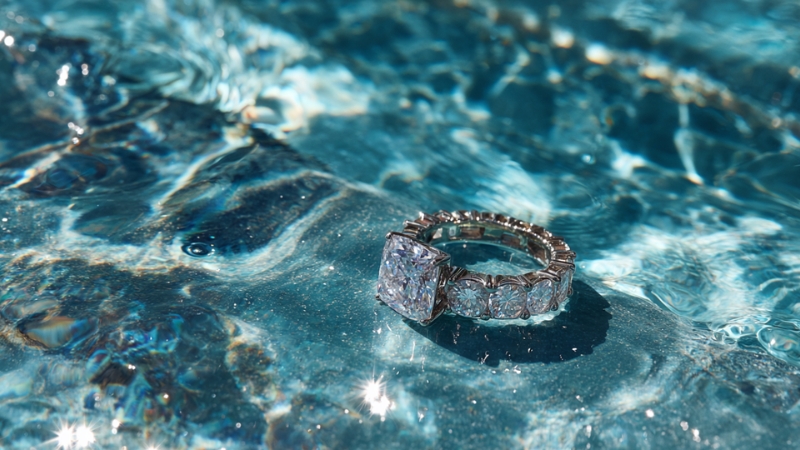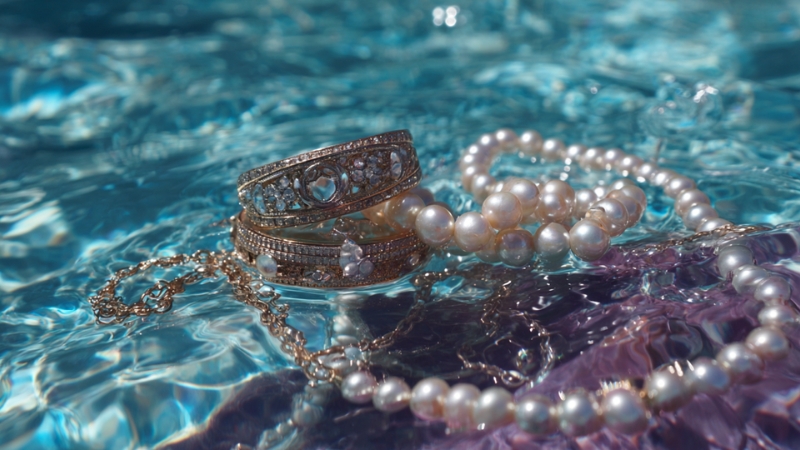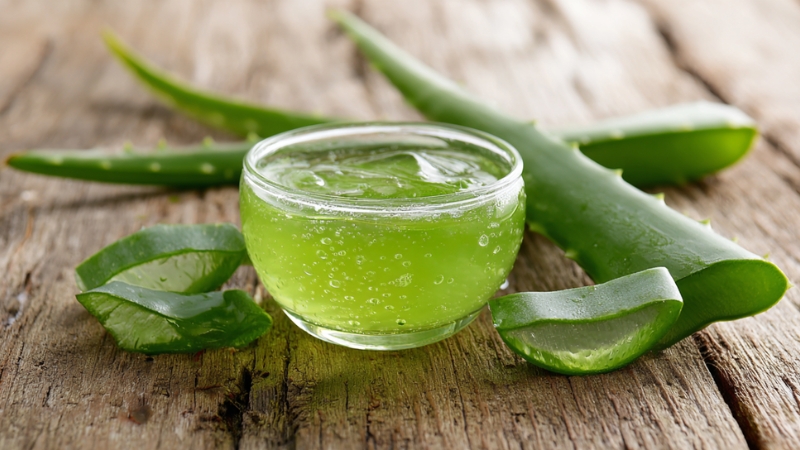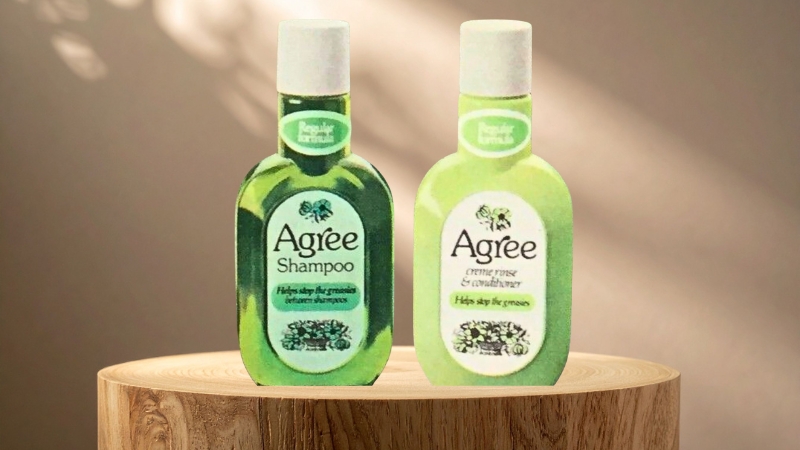
Share Post:
Swimming with jewelry may seem harmless, but pools and oceans can be unforgiving environments for delicate pieces.
Many people assume gold is untouchable when exposed to water, yet that assumption often leads to disappointment.
Every precious metal and gemstone reacts differently to moisture, chemicals, and minerals.
Awareness of how these reactions occur can help protect sentimental or valuable items.
Which Jewelry Is Most Vulnerable?

Not all jewelry reacts in the same way to water. Some materials withstand exposure better, but most pieces eventually suffer visible or structural damage.
Gold and Gold-Plated Jewelry
Pure 24K gold resists corrosion, yet its softness makes it impractical for daily wear. It bends and scratches easily.
Stronger forms such as 14K and 18K gold, include alloys that improve durability but also create points of vulnerability to chemical reaction.
Chlorine and saltwater interact with copper, nickel, and other metals in these blends, causing discoloration or weakening.
Gold-plated jewelry ranks as the most fragile category. Thin layers of gold wear off quickly in contact with water, leaving inexpensive base metals exposed. Once the plating disappears, dullness sets in, and restoration often requires professional re-plating.
Key points about gold jewelry:
Gemstones

Gemstones add color and value, but are extremely sensitive to environmental changes.
Even durable stones like diamonds become cloudy when exposed to saltwater, requiring professional cleaning to restore sparkle.
Softer stones such as quartz, tourmaline, and pearls are easily damaged by chlorine and salt.
Pearls absorb chemicals and lose their lustrous finish, leaving them chalky and dull.
The value of gemstones makes damage more devastating, since restoration is costly and sometimes impossible.
Owners often underestimate how fast water exposure can alter the clarity and brilliance of a stone.
Key gemstone risks include:
Metals like Silver, Nickel, and Copper
Metals such as silver, nickel, and copper are widely used in jewelry, often as affordable alternatives to gold.
Unfortunately, they are among the least resistant to water damage. Chlorine reacts strongly with silver, turning it black or green.
Saltwater accelerates tarnishing, leaving surfaces dull and brittle.
Nickel and copper alloys corrode quickly, often creating pitting that weakens the structure of rings, bracelets, and chains.
Even small amounts of exposure can leave visible damage.
Constant cleaning and polishing may temporarily improve appearance, but long-term resilience is rare once corrosion sets in.
Affordable accessories such as acrylic keychains do not face the same challenges, yet fine jewelry requires far greater care to maintain value and integrity.
Key risks for base metals:
How Water (and What’s In It) Interacts with Jewelry
Water is far from harmless when it comes into contact with fine jewelry.
Pools, oceans, and hot tubs all contain elements that trigger reactions with metals and gemstones.
Each environment introduces a different set of risks that slowly alter the strength, shine, and durability of treasured pieces.
Being aware of how salt and chlorine work is essential for keeping jewelry in good condition.
Saltwater (Ocean)
Saltwater is one of the harshest environments for jewelry. Metals and stones react quickly to the abrasive nature of dissolved salts and minerals.
Alloys such as Bronzallure or BAUNAT are especially prone to gradual erosion when exposed frequently to the ocean.
Gold-plated items lose their shine within a short time, while low-karat gold often develops discoloration.
Soldered joints and prongs holding gemstones can weaken, increasing the chances of losing stones during a swim.
Certain gemstones are at even higher risk in seawater. Pearls absorb salts and lose their smooth, glossy surface.
Amethyst and malachite often discolor or become structurally weaker after repeated exposure.
What once looked polished and pristine may appear cloudy or scratched after only a few hours in the ocean.
Key risks of saltwater include:
Chlorinated Water (Pools & Hot Tubs)

Pools and hot tubs present a different kind of hazard, largely due to chlorine.
Chlorine is designed to disinfect water, but its chemical strength is equally effective at breaking down metals and finishes.
Silver jewelry is among the most vulnerable, often turning black or green after multiple exposures.
Copper and nickel, frequently used in alloys, also react strongly, leaving jewelry tarnished and brittle.
Gold plating wears out faster in chlorinated water, revealing dull base metals underneath.
Even sturdier 14K or 18K gold is not immune, as chlorine attacks the alloy components.
Clasps, soldered joints, and prongs holding stones can become fragile, leading to breakage.
Hot tubs intensify the damage due to higher temperatures, which accelerate chemical reactions.
Main risks of chlorinated water include:
Maintenance Tips
Protecting jewelry after exposure requires immediate action. Freshwater rinsing is the first step, washing away chlorine and salt deposits before they settle into crevices.
A mild soap solution works for gentle cleaning, provided no abrasive or chemical cleaners are used.
Drying should be done with a soft, non-fibrous cloth to prevent scratching or snagging on delicate settings.
Harsh scrubbing must be avoided, particularly for pearls and soft stones.
Proper storage makes a difference as well. Jewelry should be kept in lined cases that block moisture and dust. Separating items prevents them from scratching each other.
Recommended maintenance steps:
Can Damage Be Repaired?
@blanksjewelry “Waterproof jewelry” is just not a phrase we should be using to describe any sort of jewelry because 99% of the time it’s not true. Gold filled jewelry, vermeil, and gold plated especially should not be brought in the shower, pool, hot tub, ocean, etc. Knowing how to take care of your jewelry will go a long way in making sure your piece is preserved and lasts a long time! #blanksjewelry #goldfilledjewelry #goldplatedjewelry #goldjewelry #jewelrycare ♬ magic – Medasin & MAE.SUN & Sara Kawai
Jewelry repair is possible in many cases, yet outcomes vary widely depending on the type of damage, the materials involved, and the skill of the jeweler.
Not every piece responds to restoration in the same way.
Some items can be brought back to near-original beauty with polishing or re-plating, while others may be permanently scarred by corrosion, pitting, or gemstone dullness.
Light tarnishing is often the easiest issue to fix. A professional cleaning session with specialized solutions and polishing wheels can remove discoloration from silver or gold, restoring a bright finish.
For pieces with gold plating, jewelers often recommend re-plating, a process that applies a fresh layer of gold over the base metal.
Structural issues require more involved techniques. Broken chains, weakened soldered joints, or damaged prongs can usually be repaired through precise soldering.
However, once chlorine or saltwater has caused brittleness, soldered repairs might not hold as well, leading to future breakage. Gemstone settings can also be tightened, but if the stone itself has lost clarity or brilliance, restoration may not be possible.
Some damages fall into the irreversible category. Corrosion that eats into the core of the metal cannot be polished away. Gemstones such as pearls or malachite, once dulled or discolored by chemicals, rarely regain their original luster.
Even diamonds, while durable, can become permanently cloudy if exposed too long to saltwater without cleaning.
In these cases, jewelers may suggest replacing the stone or remounting it into a new setting rather than attempting full restoration.
Cost is another factor to consider. Professional treatments for heavily damaged jewelry often exceed the value of the item itself, especially for pieces made with gold plating or inexpensive alloys.
Sentimental value, however, changes the equation.
Heirlooms or gifts may be worth repairing despite the expense, even if the results are only partial.
Summary
Swimming with jewelry poses risks that outweigh short-term convenience.
Chlorine, saltwater, sunlight, and even sweat accelerate wear on metals and gemstones.
Each exposure compounds the potential for irreversible harm.
A simple rule protects both value and sentiment: when in doubt, leave it out.
Jewelry belongs on dry land, not at the bottom of a pool or the ocean.
Related Posts:
- How Much Does a Hot Tub Weigh and Can You Move It By…
- How Can You Tell if Noxzema Has Expired?
- Is Dabur Gulabari Rose Water Safe for Culinary Use?
- 17 Common Skincare Mistakes That Can Ruin Your Routine
- Sunscreen Ingredients You Should Never Put on Your Face
- How Often Should You Get a HydraFacial - Expert…











